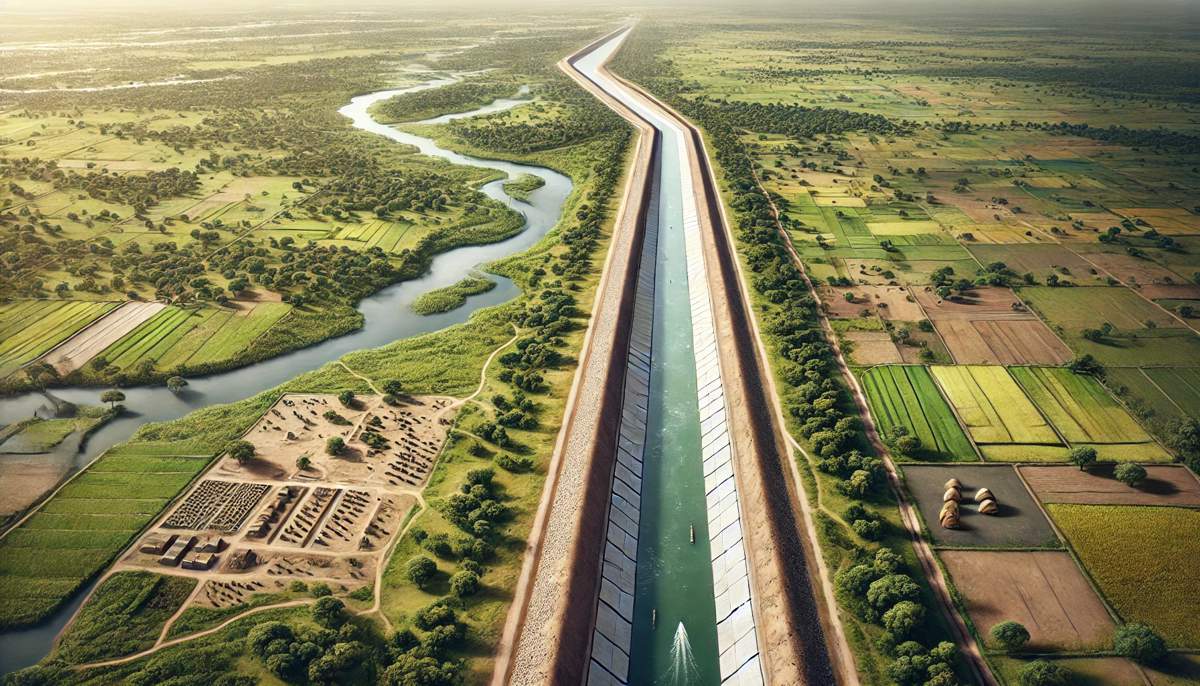The White Nile Canal Project’s Impact on Water Management in Africa
The White Nile Canal, one of Africa’s most ambitious water management initiatives, is poised to reshape the dynamics of the Nile Basin.
This project, which proposes to redirect water from the White Nile into Sudan and Egypt, offers a blend of promise and controversy. Originally conceived over a century ago, the canal aims to alleviate water scarcity and unlock agricultural potential in some of the driest regions of the world.
However, this vision isn’t without significant trade-offs. Environmental, social, and geopolitical challenges loom large, sparking debates that could redefine the future of this region.
A Century-Old Dream Stalled by Conflict
The idea of the White Nile Canal traces back to 1904 when British colonial engineers envisioned a project to divert water from the White Nile, bypassing vast wetlands, to reduce evaporation losses and increase downstream water availability. While the project gained traction in the 1970s, civil war in Sudan halted progress dramatically in the 1980s when the Sudan People’s Liberation Movement (SPLM) bombed construction sites, effectively ending the effort.
Dr. Ana Elisa Cascao, an expert on Nile governance, explained the geopolitical intricacies surrounding the project: “Egypt wanted to ensure Sudan did not utilise too much water, while Sudan was largely indifferent to its wetlands. Over time, however, the project became a flashpoint, particularly for local communities who viewed it as a threat to their land and livelihoods.”
Since South Sudan gained independence in 2011, the project’s challenges have only multiplied. For the newly formed nation, resistance to perceived external control over vital resources has become a central issue, adding complexity to an already fraught regional dynamic.
Environmental and Social Costs
The ecological implications of the White Nile Canal project cannot be overstated. The Sudd wetlands, which stretch over 3,500 square miles in South Sudan, form Africa’s largest freshwater wetland and support unparalleled biodiversity. These wetlands are home to 1.3 million migrating antelope, thousands of hippos and crocodiles, and some of the region’s most endangered bird species. The wetlands also provide critical ecosystem services, valued at an estimated £2.6 billion.
Maysoun Al-Zoubi, an international water diplomacy expert, voiced her concerns: “These wetlands support Africa’s largest mammal migrations. Shrinking them could reduce fishing, disrupt animal migration, and lower groundwater levels, turning lush areas into deserts.”
Shrinking the Sudd to increase water flow downstream could have far-reaching effects, not only on wildlife but also on local communities. Nomadic groups, dependent on the wetlands for grazing livestock during seasonal migrations, risk losing their way of life. “A canal would disrupt these routes, destroy livelihoods, and create tensions in already fragile regions,” Dr. Cascao warned.
Flood Control or Ecological Disaster?
One of the key arguments in favour of the canal is its potential to mitigate flooding, which has displaced thousands in the region in recent years. South Sudanese Vice President Taban Deng Gai has championed the canal as a way to control floodwaters and improve agricultural conditions.
However, the nation’s Ministry of Environment remains firmly opposed, warning of the irreversible ecological damage that would result. Dr. Cascao added: “Wetlands are not just reservoirs of biodiversity; they regulate water flow and sustain communities downstream. Cutting a wetland in half, like the Sudd wetlands, is profoundly disruptive.”
Promises of Development
Despite its risks, the White Nile Canal holds undeniable potential for regional development. By reducing water losses due to evaporation, the project could make millions of additional cubic metres of water available for agriculture. Experts estimate that the canal could irrigate up to 7.5 million acres of farmland, enhancing food security and stimulating economic growth in Sudan and Egypt.
Al-Zoubi acknowledged this potential but stressed the importance of a balanced approach: “Development should not come at the expense of ecosystems or communities. Before proceeding, rigorous investigations must be conducted to assess the potential consequences.”
Dr. Abbas Shraqi, a water resources expert, pointed out inefficiencies in South Sudan’s water management system, where much of the Nile’s flow is lost in swampy regions. “Deepening the canal could unlock more water for productive use, benefiting all nations involved,” he said. However, he also acknowledged the significant hurdles: “Progress has been hindered by mistrust. Countries need assurances that their interests won’t be compromised.”
Financial and Political Hurdles
While the canal’s potential is clear, its feasibility remains a major challenge. Large-scale infrastructure projects of this nature require immense financial investment, and funding remains uncertain. Dr. Cascao questioned the practicality of the endeavour: “Can Egypt afford it? Who would fund such a project in today’s economic climate?”
The political instability in Sudan further complicates matters. Ongoing turmoil has made land control unpredictable, making it difficult to implement a project of this scale. “Land control is too uncertain,” Dr. Cascao remarked.
Even so, proponents like Dr. Shraqi maintain optimism. He believes that, with the right political will and regional collaboration, the project could transform South Sudan’s marshes into productive farmland, boosting agricultural output and driving economic growth.
Towards Regional Cooperation
At the heart of the debate lies the need for cooperation among Egypt, Sudan, and South Sudan. Experts agree that a regional approach is essential for balancing environmental, social, and economic concerns.
Al-Zoubi emphasised the importance of transparent communication and community engagement: “Public awareness initiatives can help stakeholders align around common goals. Transparent communication with local communities is essential for building trust and reducing resistance.”
By fostering collaboration and ensuring that development efforts respect ecological and social boundaries, the White Nile Canal could serve as a model for sustainable water management in Africa.
A Future Built on Balance
The White Nile Canal represents both an opportunity and a challenge. It has the potential to transform arid regions, improve food security, and strengthen economies, but only if the environmental and social costs are carefully managed. For now, the project stands at a crossroads, with its success resting on the ability of stakeholders to collaborate, innovate, and prioritise sustainability.
As Africa continues to grapple with the complexities of water resource management, the White Nile Canal serves as a stark reminder that development, while essential, must always strike a delicate balance with nature.




















